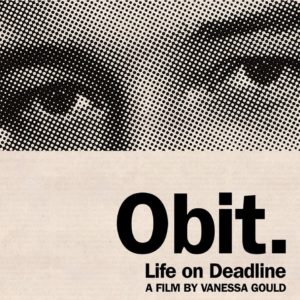Enter now for a chance to win one of five Kindle editions of Bridge Daughter! The giveaway runs until midnight, August 13, 2017.
Update: The winners have been selected! Thanks to everyone who entered.
Enter now for a chance to win one of five Kindle editions of Bridge Daughter! The giveaway runs until midnight, August 13, 2017.
Update: The winners have been selected! Thanks to everyone who entered.
 Many people have been asking me about the follow-up to Bridge Daughter…I’ve been pretty tight-lipped about the project, but did want to share that I finished the final draft tonight.
Many people have been asking me about the follow-up to Bridge Daughter…I’ve been pretty tight-lipped about the project, but did want to share that I finished the final draft tonight.
Hagar’s Mother clocks in around 90,000 words. It’s a not-quite-direct sequel, in the sense that the events of the book take place a generation later than Bridge Daughter. The history of bridge daughters is explored further as well as the story of Hanna’s family.
Quite exhausted at the moment. I have high hopes for this book. Wish me luck! More news coming soon.
An untested opinion I’ve held for many years:
Modern mystery fiction has supplanted 19th-century American regional literature, sometimes known as “writing of local color,” as its dominant form.
Regionalism is most strongly associated with Southern writers like Kate Chopin and Joel Chandler Harris, but after the American Civil War local color writing sprung up all over the country. Charlotte Perkins Gilman (“The Yellow Wallpaper”) cataloged New England’s parochialism while Bret Harte wrote roaring tales of California’s Gold Rush. Scholars make distinctions between the terms “regional literature” and “writing of local color,” but I’ll use them interchangeably here.
Regionalism in American writing faded after the turn of the century to be replaced by a more consensus-based literature. Perhaps the twin rise of mass literacy and mass media contributed to regionalism’s fade, although it did not go extinct. Faulkner and Jean Toomer wrote well into the 20th century, and wrote using techniques that would have been foreign to the earlier regional writers, but their fiction is unmistakably grounded in regionalism.
But did regionalism truly fade away? Or was it replaced by something else?
It seems to me that mystery fiction quietly—almost subversively—filled in regionalism’s absence. Every major city in America is host to at least one major crime or detective writer, from Seattle (Aaron Elkins, G. M. Ford) to Boston (Robert Parker, Dennis Lehane) to Chicago (Sara Paretsky) to New Orleans (James Lee Burke), all representing their respective locales through their work. Name almost any place in America today and you’ll find crime writers prowling its dark corners. In the process, they’re introducing the region’s colors and textures to a national audience.
More than any other form of fiction today, mystery is concerned with setting. Science fiction has almost no restrictions when it comes to setting. Fantasy explicitly takes place elsewhere than the here and now, otherwise it’s not fantasy. Romance fiction has setting too, but its concerns are before the fireplace and in the bedroom.
Even contemporary American literature—”fiction of literary intent,” so-called hard realism—is not as connected to setting as mystery fiction. Too often stories from the small literary magazines feel as though they could take place in any city or suburb or small farm, whichever backdrop suits the characters and the emotional arcs they traverse.
Perhaps the only other form of American fiction so tied to setting is the Western, a genre that not coincidentally shares a great deal in common with the American mystery, especially the private eye genre.
I’m not saying other forms of fiction don’t possess a setting, or that they don’t concern themselves with setting. I’m saying that, for the form as a whole, mystery adopts a priority for regions—regionalism—other forms do not.
In mystery, scenes unfold on streets with grounded names and in bars with a history. A great mystery reads like a travelogue of a town, a neighborhood, or a county. The American mystery has a tradition of hewing to real-world settings, such as the streets of Nob Hill in Hammett’s stories and novels. Ed McBain’s “87th Precinct” police procedurals take place in a fictional New York City borough, but it’s the Big Apple all the same. Sue Grafton’s stand-in for Santa Barbara (“Santa Teresa”) is so Southern California, you can imagine The Eagles cutting a single about it.
This, I say, is the New American Regionalism. Mystery writers delight in bringing alive their surroundings, and by doing so they share their surroundings with their readership. Local color means local characters and local charm. Look at what stylist Elmore Leonard does so expertly in his Florida novels, capturing all the facets of dialects and cultures in Miami. The Encyclopedia Britannica’s entry of local color emphasizes “the features and peculiarities of a particular locality and its inhabitants.” This fits Florida crime writing to a T, with an emphasis on the peculiarities and particulars of the genre’s always-colorful cast of characters (Leonard, Carl Hiassen, Edna Buchanan).
My first inkling of the connection between regional writing and mysteries came to me twenty-five years ago living in San Luis Obispo, California. An ever-reliable bookstore there stocked a case of local writers, including several mystery series. Perusing the back cover blurbs, it was apparent the writers had mined the peculiarities and particulars of San Luis Obispo County for all it had to offer. My cynical younger self found it ludicrous, these over-boiled private eyes and steely Lt. Detectives walking the mean streets of San Luis Obispo, a place ranked “one of the happiest cities on Earth.”
Over the years I’ve lightened up. I came to realize the mystery writers of SLO Town were merely doing what all regional writers have done in America: Explore, critique, and celebrate they places they live.
In the comments for a previous post on Ann Wroe, obituary writer for The Economist, Peter Marinov helpfully pointed me to a recent NPR interview with two New York Times obituarists, Margalit Fox and Bruce Weber.
Margalit Fox wrote an eye-opening Times essay in 2014 on the art and craft of writing obituaries, so I’m familiar with her name and work. The recent NPR interview coincided with the release of a documentary on Fox and Weber, Obit: Life on Deadline, which I certainly look forward to seeing.

My own interest in all of this comes from a short story I published years back in the North American Review called “The Obituarist”. Researching and writing that story led to my own interest in this underappreciated field of journalism.
Like Ann Wroe’s thoughts on the profession, Fox and Weber share fascinating insights on this odd but rewarding career path. There’s a goldmine of wisdom in the interview, but it’s this observation that stood out for me:
And I think the other great attraction is we are the most purely narrative genre in any daily paper. If you think about how an obit is structured, we are taxed with taking our subjects from cradle to grave, and that gives obits a built-in narrative arc, the arc of how someone lived his or her life. And who doesn’t want to start the day reading a really good story?
A tweet today reminded me of a topic I’ve wanted to get off my chest for some time now:
https://twitter.com/jaredkessler/status/876553946436784128
 To answer Kessler’s question, no, I do not remember any moment in time when authors and publishers (or even readers) thought ebooks would replace paper books.
To answer Kessler’s question, no, I do not remember any moment in time when authors and publishers (or even readers) thought ebooks would replace paper books.
I’ve seen and heard this claim so often I can only conclude some massive rewiring of collective memory has beset our culture. There never was any serious wave of self-congratulatory back-patting in the publishing world, never a moment when all involved parties joined their voices and spoke in unity about the demise of physical books. It never happened.
A Google search of “ebooks will replace physical books” discovers exactly one (1) entry on the front page advocating for such a change—and that page is a summary of a debate from a Maine Writers and Publishers Alliance conference in 2015. An august association, I suppose, but not a representative body for all “#authors and #publishers.”
The remainder of the Google search is an object lesson in Betteridge’s Law: “Any headline that ends in a question mark can be answered by the word no.” The Google search results include:
As Betteridge predicted, all of these missives declare paper-based books will never die, even though their authors drop in the usual journalistic escape-hatch clauses admitting, yeah, okay, ebooks are here to stay. From the way these writers discuss the issue, you would think there’s zero latitude for personal reading preferences. The mere existence of ebooks is treated as a mortal threat to the traditional form.
Since I publish ebooks, some people seem to presume I’m a kind of cultish advocate for end-of-lifeing paper-based books. I’ve even lost friends over the topic. Only about 50% of my reading diet is digital, the remainder being physical books which I cherish. You can purchase my latest book in paper-form, and I’d be more than delighted if you did.
Look again at Kessler’s tweet; there’s a subtle discrimination packed inside it. Ebooks aren’t “real” books, a frustrating non-distinction for many struggling writers. It’s 2017, the 21st century. Indie music acts sell their songs only online; Netflix and Hulu produce award-winning shows only available via streaming; and yet authors who distribute digitally aren’t writing authentic books. A hundred years ago paperbacks were sneered down on as not “real.” Today the distinction seems quaint.
A nickel’s worth of unsolicited advice to those who prefer physical books: Keep reading and keep buying, but by all means, quit ginning up outrage over a nefarious trend that never happened.
From The Economist comes an interview with Ann Wroe, one of their in-house obituarists. I’ve documented my interest in the profession here (multiple times) and elsewhere, and even wrote a short story about the career choice.
Wroe on the craft:
I look through the obituaries of the New York Times and the Telegraph. I’ll spot someone who looks really interesting and I’ll hear a bell going off in my head. I do it for the story, and not whether the person is famous. I love it when someone’s had a quirky career that we wouldn’t be dealing with in any other part of the paper, such as a woodcarver or a whale hunter or a firefighter.
On the career itself:
It’s odd because people think it’s a rather gloomy job, but it’s very seldom a sad job. Usually, the people you’re dealing with have lived for ages and have done really interesting things. … An obit is really a celebration of a life. It’s really a joyful thing most of the time. That’s why I love the job.
I believe a great exercise for any student of writing would be to select someone currently alive, famous or not, and write their life story in under 1,000 words. Do that five, ten, twenty times, each time a different person. The exercise will change how you approaching writing stories, from microfiction to saga-length novels.
Last time I wrote about keeping a writing notebook. Let’s say you started one, or have been keeping a notebook for some time. What do you do with it? Once you’ve filled a notebook with all these ideas, how do you transfer that inspiration to a short story or novel?
From an essay I wrote for North American Review regarding a short story of mine, I discussed how I used a writing notebook:
On occasion I revisit my writing notebooks for inspiration…Many of my stories evolve from my own (sometimes misplaced) attempts to wire two or three bits of disparate inspiration together and see if sparks fly.
The inspiration for the story they published (“The Obituarist”) came from three lines scribbled into my notebook years ago:
“The Obituarist – Dying, old age, writes obits for living ppl. Also writes fiction—short stories?—and has come to realize that man is reliant on conflict, tension, etc. because all our stories rely on them, and they are not stories otherwise. Speaking to a young person writing his obit. (Or he writes book reviews.)”
That was it. I had a title alright, and some idea of a character and his situation, but nothing further. As I explained for NAR, about a year after writing this in my notebook I began working on the story itself, which is now collected in A Concordance of One’s Life.
This is the true value of a free-form writing notebook. For some people, a writing notebook is to prevent forgetting something. For others, a notebook is a journal, a way to talk to one’s self, a method of getting down pent-up emotions, ideas, or even a fleeting notion that may or may not be useful later.
I keep a writing notebook to externalize my thoughts. Externalizing inspiration, no matter how crazy or random the inspiration may seem, is itself an act of creation. Writing an idea in a notebook is as important as sitting down before the computer and formally typing the story. Those erratic sentences I scribbled about the obituarist were not subsidiary or tangential to writing the story. Those words were the genesis. The story started with me scratching those erratic lines into my notebook, not a year later when I typed the opening sentence in my word processor.
By committing some scattered notions to the page, I’m getting them out of my skull—where they’re fluid, malleable, and insubstantial—and forcing them into the physical world, where they take shape and harden into form. It’s important to judge my ideas objectively in the bald daylight to determine if they’re worth expanding upon.
Plenty of my inspirations go no further than the notebook. That’s not a bad thing. Most do not age well. When I return to my notebook, I often blanch upon reading these old inspirations. I will hurry to turn the page—a sure indication I made the best decision not to pursue them.
In my NAR essay, I wrote that “The Obituarist” grew from a single idea. More often I find success in combining ideas, “to wire two or three bits of disparate inspiration together and see if sparks fly.”
I hold a pet theory that true inspiration is rarely, if ever, a single atomic idea. Inspiration is more often multiple ideas coalescing into one. These balls of inspiration accrete mass over time until a tipping point is reached, and the creator feels the urgent need to get the accumulation down on the page in the form of a story. (Or on the canvas, or modeled in clay, and so on.)
For an example of wiring disparate bits of inspiration together, I point to another story in the collection, “A Concordance of One’s Life.” The elements from my notebook contributing to the story include:
When I began writing “Concordance”, the early drafts only involved points 1 and 2. I thought pairing them answered that first question (“but why?”). I was wrong; the early drafts of the story went nowhere. I’d noted the second two bits of inspiration in my notebook before starting the first draft but failed to make a connection. I thought they were for a separate story, if I used them at all.
In a later draft, I added the third inspiration and sparks began to fire. The quiet mountain town as a tourist attraction added a quirky backdrop to my drafts, odd scenes of faceless people going from location to location with their well-worn concordances in hand. Still, the story was shiftless and moody and failed to progress.
The final bit of inspiration came from waking one Saturday morning and, hazy-headed, realizing the cheated man was not the concordance’s author. Rather, the narrator was a friend or an acquaintance who went unmentioned in the concordance (even though everyone else in town is described within it).
I’d given up on the story several times over a span of nearly two years. Patience and focus on the story’s needs led to plenty of sparks that Saturday morning. The draft I wrote became more-or-less what was published by Watchword later that year.
(Somewhere in this is a moral about not giving up on stories, but I must confess it’s sometimes good to cut anchor and move on. Some stories simply cannot be salvaged.)
The fourth point on inspiration—”man with a name no one can pronounce”—found its way into the story during the Saturday morning writing session. It was a last-minute addition. I’d been thinking about the man with the unpronounceable name as the basis for another story, but it had no feet. At the computer Saturday morning, I included it as a gag, a side bit of detail. As the story came to fruition, I realized it was one of the most salient aspects of “A Concordance of One’s Life.”